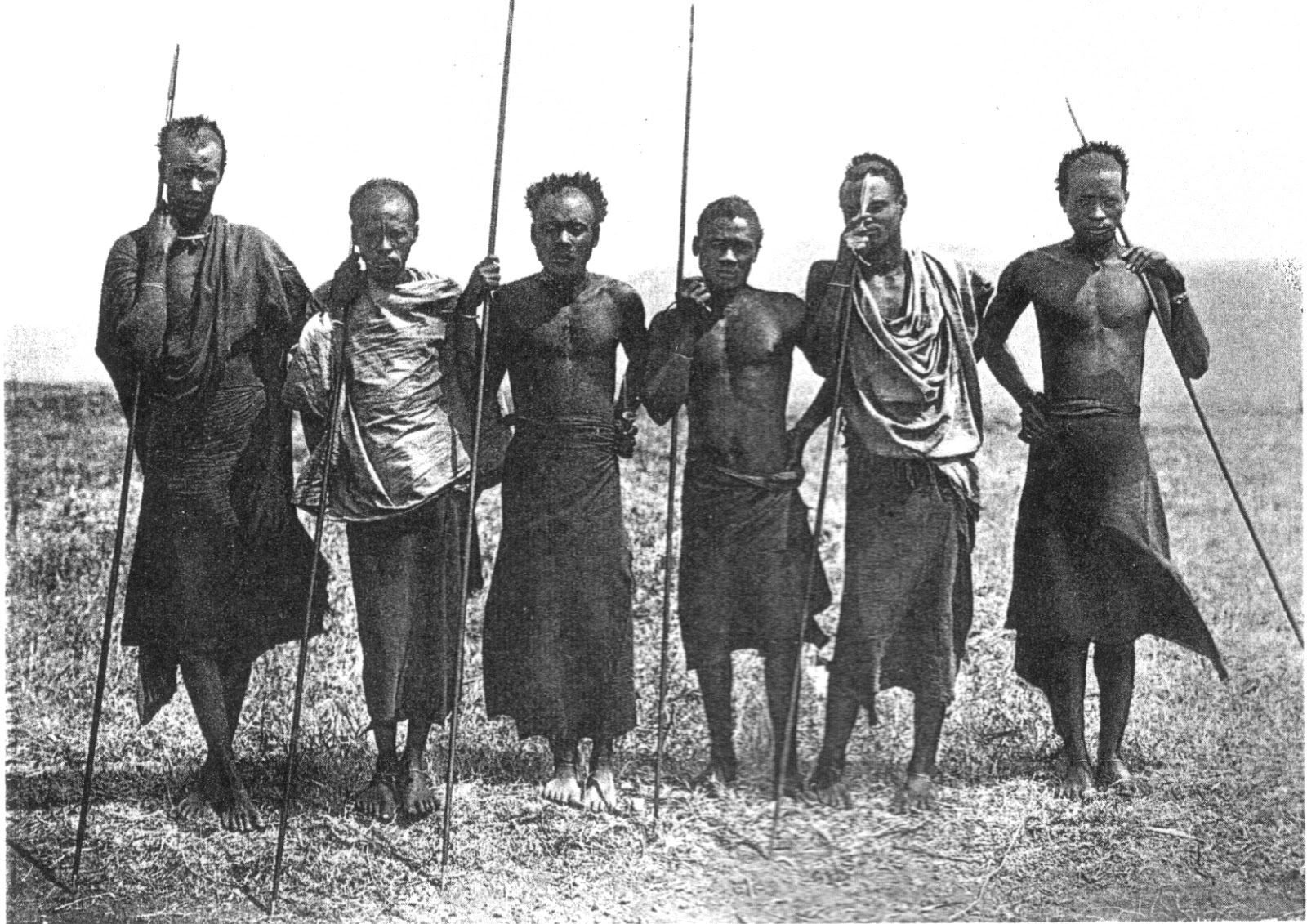In precolonial interlacustrine Africa people traveled a lot. The region was a hub between different trading Systems: traders from the East African coast met traders from the Upper Nile, people from the Congo basin traded with societies of the tropic forest region. Some of these trading parties involved thousands of people. Nomadic pastoralists constantly moved in search for pasture lands. The 19th century was a uncertain period for many people in the region. Civil wars and war between different kingdoms and chiefdoms resulted in waves of refugees throughout the century, notably in the second half.
 |
| Traveling people from Rwanda (Czekanowski 1911) |
For most people to travel meant to walk. Horses were almost uncommon, mainly because of the unhealthy climate. In many of the pastoral societies of the region, cattle was a main preoccupation, but they were not used for transport.
As in other region of the world, too, there was a major difference how powerful and ordinary people traveled. Kings and Chiefs did not walk, but were carried in hammocks. The pictures show some of the different types of how this was done in the region.
 |
| An African chief in a hammock (DKG-Archive) |
 |
| Musinga in a hammock (DKG-Archive) |
Since in some societies the king of chief was regarded as a sacred embodiment of the country, they were in some way restricted in their opportunity to travel. Taboos prohibited to cross the border of their kingdom.
Europeans, who traveled to the region, did this mostly by foot. Only if they became ill, they were transported with a hammock or a stretcher. The following film clip taken from the movie “Mountains of the moon” illustrates this quite good. The scene is about the arrival of John Hanning Speke and Richard Francis Burton at Lake Tanganyika.
Some European explorers thought that walking was the only way to cross the continent. Counting steps during their marches was an important measurement of distances and some exercise in displine as well.
On his first trip to cross the African continent, the German traveler Hermann Wissmann rode on a bull. This made a great impression on the people of the Congo basin, he wrote in his account, and helped him to force his way. Perhaps, people thought that the German was completely mad and let him go.
 |
| Wissmann on a bull arriving at an African village (Wissmann 1890) |
At the end of the 19th century, when Europeans begun to established their rule in the region, they also started to compete with African chiefs in the performance of prestige while traveling. They introduced sedan chairs and rickshaws. African rulers were eager to hold on in this contest and easily adopted the new ways of being carried, in particular in the highly ceremonial encounters with European officials.
 |
| A German officer carried by his soldiers |
 |
| Adopting new means of travel: Kahigi of Kiaanja on a sedan chair |
After the First World War motorcars became more common. One of the first Africans to own such a car was the Rwandan king Musinga. Other chiefs followed.
 |
| A German settler in the Kilimanjaro region |
 |
| A Rwandan chief standing besides a car in the 1920s (Bourgeois 1982) |










Comments
Post a Comment